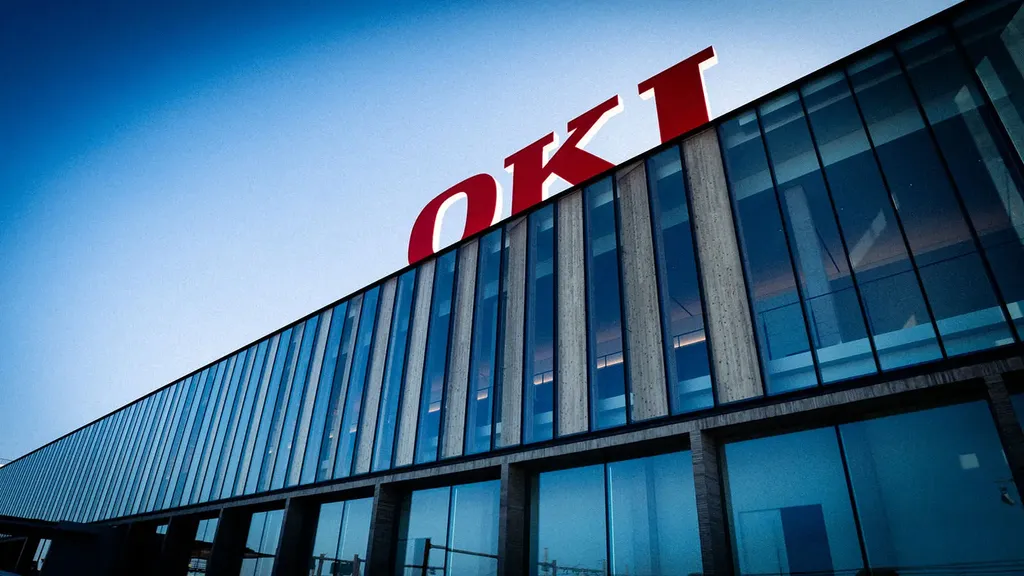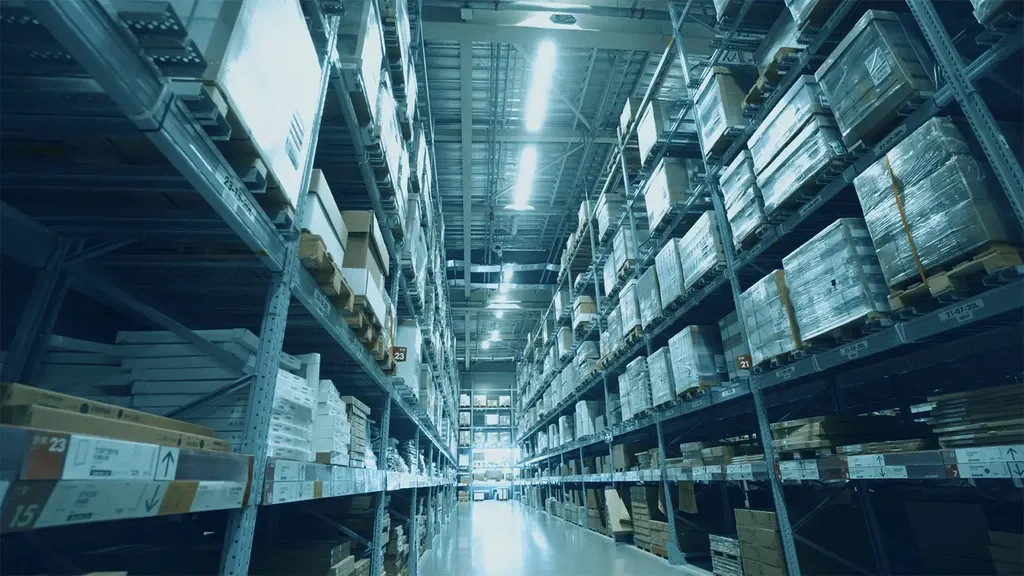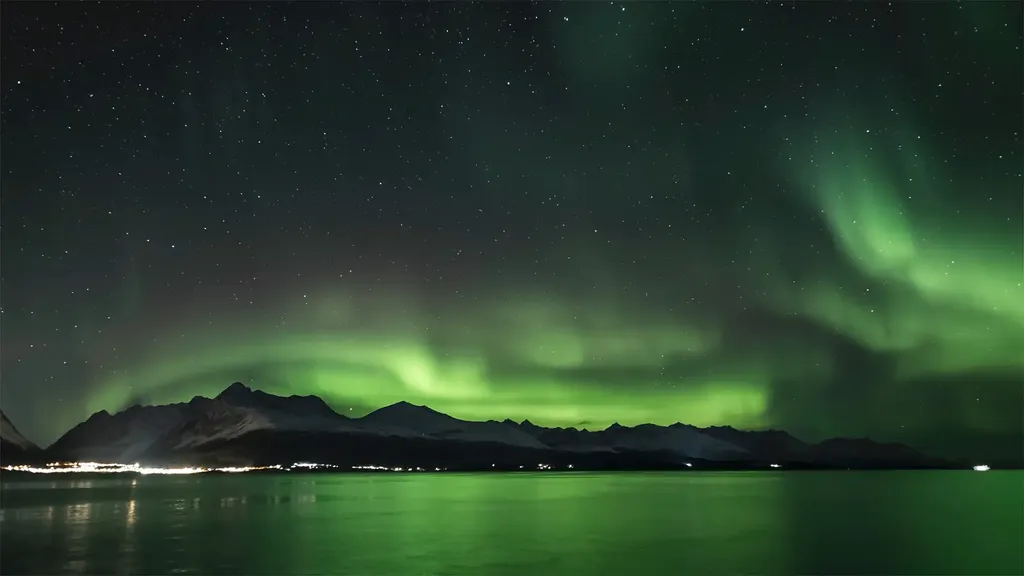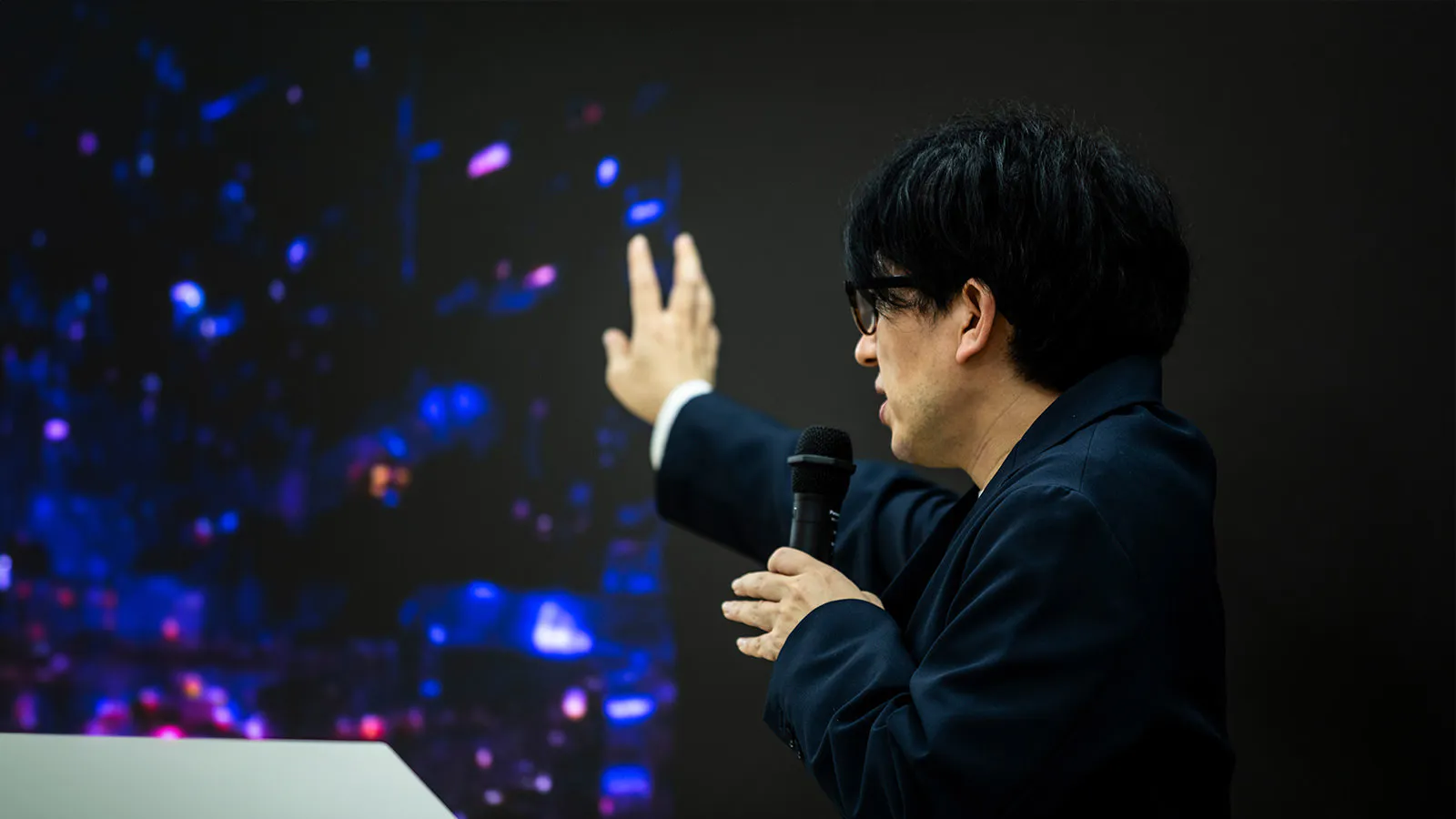
Technology turns towns and cities into hubs for entertainment and art experiences.
-5GMF Millimeter Wave Dissemination Promotion Workshop / Japan's Industrial Technology Frontline Report
The speakers for the third session were from IMAGICA EEX and Mori Building, with Haruyuki Moroishi, CEO and CCO of IMAGICA EEX, and Takashi Sugiyama of the TOKYO NODE Management Office of Mori Building Co. In the second part of this report, Mr. Sugiyama will talk about "Technology and Ar...
2024/04/02
Posted on 2024/04/02
The latest technologies, represented by 5G, are becoming relevant to the art realized in the real world of cities and events. The 5th Generation Mobile Promotion Forum (5GMF) held its third workshop on the "Frontiers of Industrial Technology in Japan" in March 2024 to promote the spread of millimeter wave. The aim was to provide an opportunity to interact with a wide range of people outside the telecommunications industry, and the speakers for the third session were IMAGICA EEX and Mori Building, with Haruyuki Moroishi, CEO and CCO of IMAGICA EEX, and Hisashi Sugiyama, Tokyo NODE Management Office, Mori Building Co. In the second part of this report, Mr. Sugiyama will report on the content of his presentation, "The Future Created by Technology and Art.
I have been working in urban development for about 20 years. New buildings and towns are opening one after another, not just the Mori Building, but as long as the towns are built with tenants, they inevitably end up looking alike. For the sake of convenience, that is not to be denied. On the other hand, to create a town or facility of choice, it is necessary to have individuality. When I thought about who should take on the challenge of creating that individuality, I decided that real estate developers who can create synergy across the entire city should create their own content, and five years ago I established the New Territory Business Department at Mori Building.
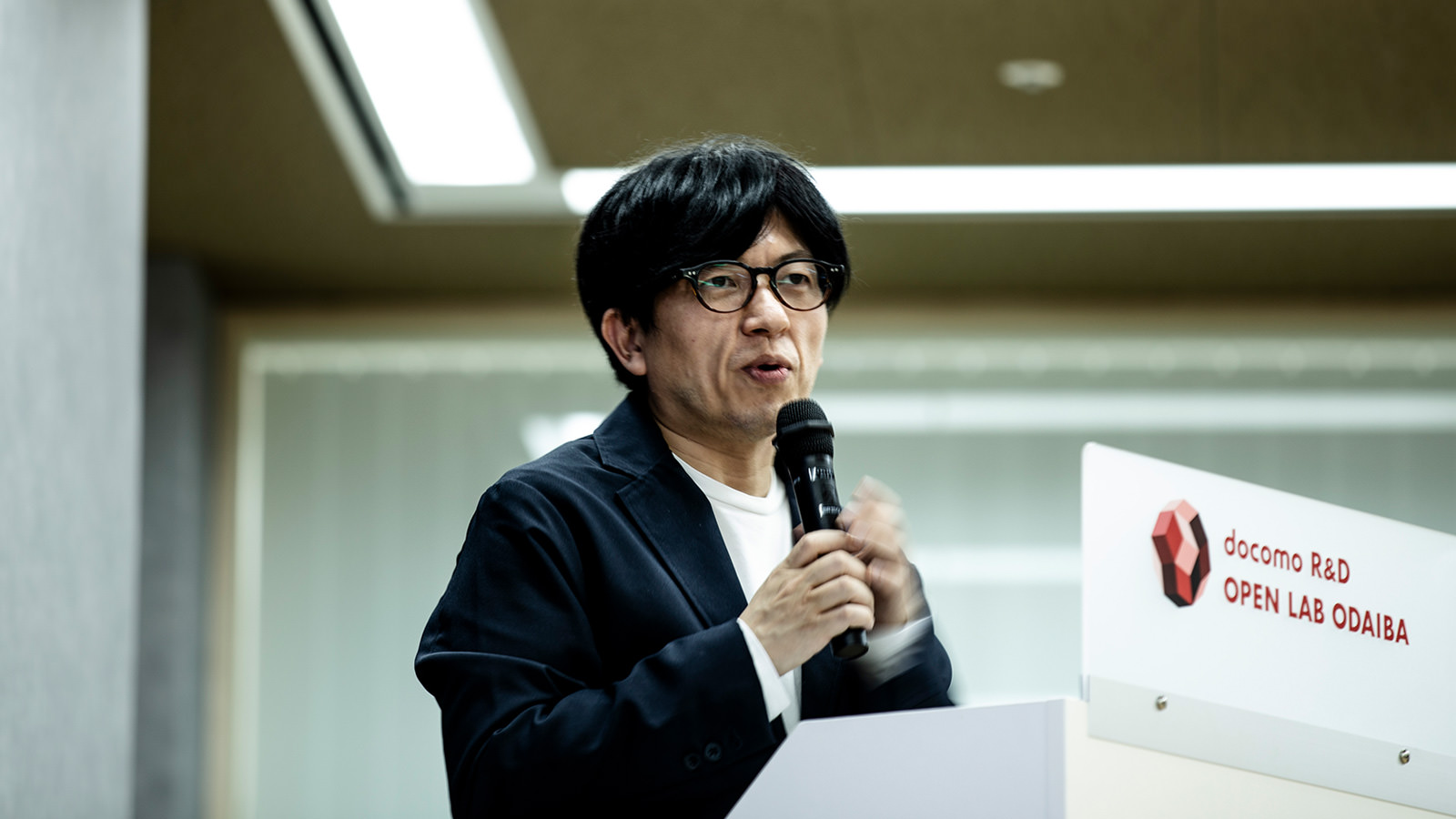
I am responsible for the planning of TeamLab Borderless, a digital art museum created with TeamLab in Odaiba in 2018, and for TOKYO NODE in Toranomon Hills, which will be completed in 2023. A new town has also opened in Azabudai Hills. Rather than renting out space to tenants, Mori Building itself is in the business of finding content.
Today I will talk about what is happening in the creative industry. With technology supporting all forms of expression, there are many changes taking place. I will explain three examples, focusing on projects I am involved in.
The city itself becomes a communication platform.
The first is "TeamLab Borderless" (Mori Building Digital Art Museum: Epson TeamLab Borderless), a facility that was located in Odaiba until two years ago and relocated and opened in Azabudai Hills on February 9, 2024. It is the world's largest digitally represented museum. In the Odaiba example, a huge space of 10,000 square meters was all digital twin. For the thousands of visitors who entered at the same time, the space all kept track of people's location and movements. This creates a single world where the boundary between the digital and real worlds has disappeared. It is a "museum without a map" where visitors are free to roam around the digital world, creating a landscape in which the experiencer and the environment are one.
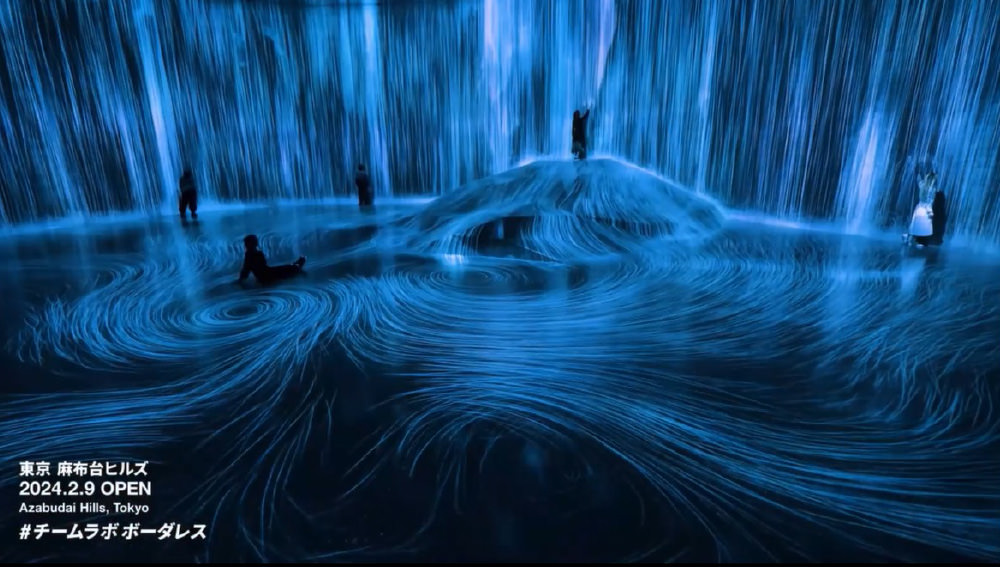
Here are some images from the Azabudai Hills museum, which opened on February 9. The images of water and rock mountains are all created with digital data, and the works are all expressed in real time, in relation to people. The work is like creating a world with hundreds or thousands of people existing in the space. In the Odaiba example, there is a huge computer server in the back that communicates with the space itself, computing and expressing everything from the video equipment to the movements of the people and the artwork.
During the Odaiba period, 2.3 million people visited the museum in one year. To give you an idea of how impressive this is, the Museum of Modern Art (MoMA) in New York is said to have 2.7 million visitors a year, so we have created an art museum that rivals MoMA. About 70% of our visitors come from overseas, and in the first year we had visitors from 170 countries. Half of the visitors came to Japan for this museum. This was an example of combining artists' ideas and technology to create value that cannot be obtained without visiting the facility or location.
The second example is TOKYO NODE, which opened on the 45th through 49th floors of the Toranomon Hills Station Tower. It has a music hall, a huge event space comparable to the Mori Art Museum, and a swimming pool on the roof. The NODE in TOKYO NODE means a node that connects something to something else. It is meant to create and transmit new things from here by melding conventional categorized things such as art, entertainment, science, and technology without boundaries. It is a base for projects that open up the space and the city to creators and artists to create new services, entertainment and art experiences from here.
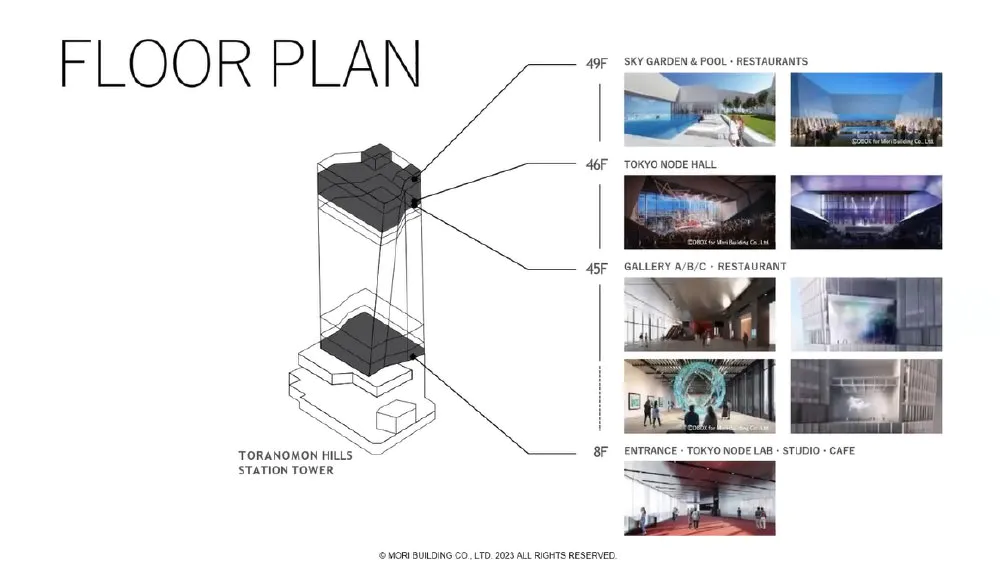
On the 45th floor, there is a museum space with a very high ceiling height of 1,500 square meters. While conventional art museums are mainly designed to display pictures, this museum has a catwalk under the ceiling, which is equivalent to a stage mechanism on a live concert stage. There is also a semi-circular dome wall with a ceiling height of 11 meters, which can provide visitors with the experience of being enveloped and the images that allow them to enter the world.
The 46th floor has a unique main hall. The most unique feature is that the stage backdrop is made of window glass, like an aerial stage overlooking Tokyo. The Tokyo backdrop was created as a symbolic image for the TOKYO NODE content to be delivered to distant locations.
On the 49th floor, where the rooftop is located, we have created an infinity pool. There is a pool where people can actually swim against the backdrop of the Tokyo nightscape, with a garden and restaurant on the side. When we thought about how to create value that would make people have to come here, we came to the conclusion that we needed an extraordinary space to attract a diverse range of people, including people with ideas.
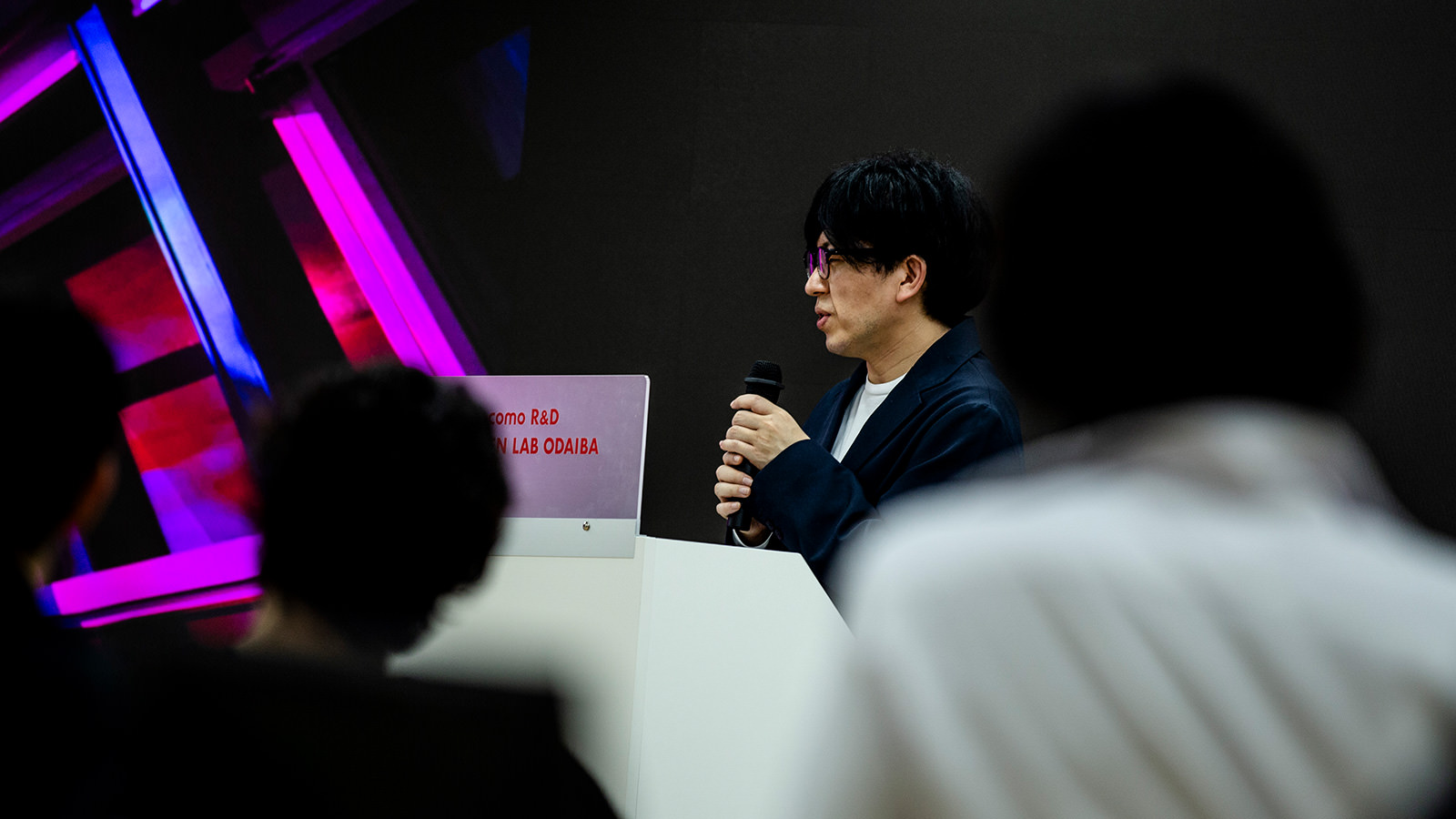
Open up urban data as a device to generate entertainment
Third, and this is the last case study, within TOKYO NODE, we have created a team called TOKYO NODE LABO, and we are working to create new experiences by sharing our areas of expertise with various companies. We also have IMAGICA EEX, which will be the subject of the first half of my lecture, participating in this project as a member of the team.
Here, we operate the Volumetric Video Studio, which preserves human movement in space in three dimensions. This is a joint project between Mori Building, Canon, and IBM. We have opened up not only the Volumetric Video Studio, but also the entire Toranomon Hills area to high-definition digital data. This allows us to create applications using the city's data. We held a hackathon, and for example, in an augmented reality (AR) golf game, when you take a golf swing with your smartphone, the ball you hit flies up to the pedestrian bridge on the AR and onto it.
The reason why Mori Building, which provides the city, set up its own studio is because it believes that the city itself should be a device for creating entertainment. To achieve this, we need to create an environment that makes it easy for people to express themselves, otherwise creators and artists will not gather. Here, we open our state-of-the-art studios to creators and artists. Roppongi Hills did not have digital data that could be released, so we asked creators to start by scanning the data themselves. But that doesn't make the data available to everyone.
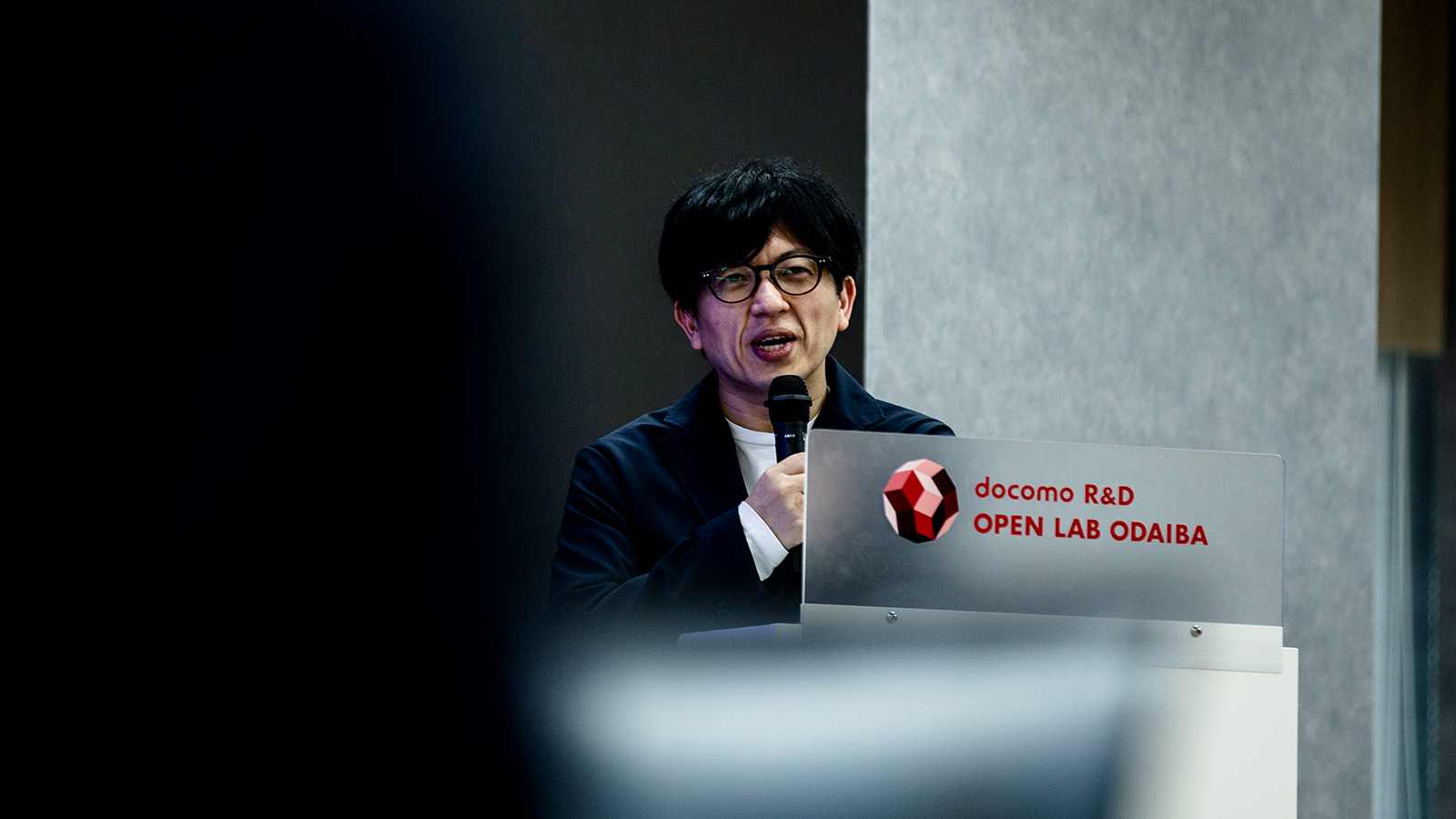
To make it a more open place, digital data should also be opened up. And users can expand the place of expression by using actual physical data taken by digital metric video, not just some iconic self. For example, an app for hypersensitivity can mark the location of dazzling lighting, and when you use goggles to look at it, you can see that it is not dazzling. This is also possible because we have opened up all of the city data.
Technology supports a society in which the entire city becomes art
As technology brings about changes in expression, I would like to introduce four key words. They are "someone else's story/my story" (narrative), "it is both an individual and collective experience (empathy)," "it can only be experienced in that moment (LIVE feeling)," and "the story changes (interactive).
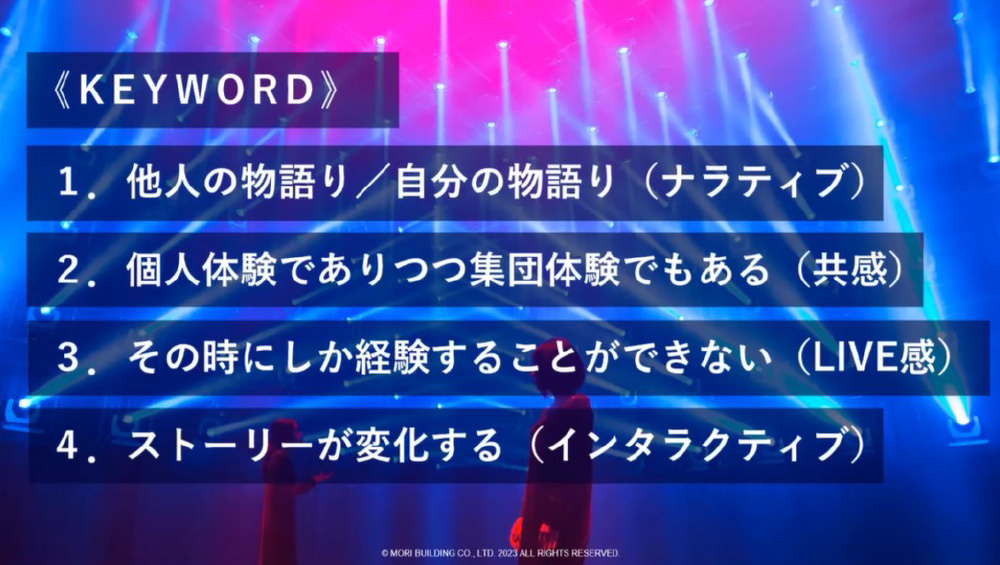
The first is narrative, your story and the stories of others. We enjoy novels and movies for their stories in which protagonists other than ourselves play an active role. But now, with the evolution of technology, content is becoming your own story. You become the protagonist of your own story, and each person can participate in a different story.
The second is empathy, which is both an individual and collective experience. It is more fun to watch a soccer game on live viewing with many people than on TV at home. TOKYO NODE's music hall has only 338 seats, but we have prepared audience seats on the digital twin metaverse, so whether 10,000 or 20,000 people are in the audience, they can all enjoy the content at the same time with a sense of empathy. We believe that whether 10,000 or 20,000 people enjoy the contents at the same time, they can share in the experience.
The third is the live sensation that can only be experienced at that moment. This is something that is truly transitory in value and cannot be rewound. It was difficult to express digitally, but now we can create images and experiences that will never appear again with technology that can only be generated at that moment.
The fourth is interactivity, where the story changes. This is envisioned as something where you are involved in the story and your own unique story is created. We are also planning something like an immersive theater set in the city.
Team LaBordares is a world that has been confined to a box, but I would like to continue my research as an artist to create a society where the box is removed and the entire city becomes a museum, where artworks move around, where people can eat and shop, and where technology can be used to create such a society. As an artist, I would like to continue my research.
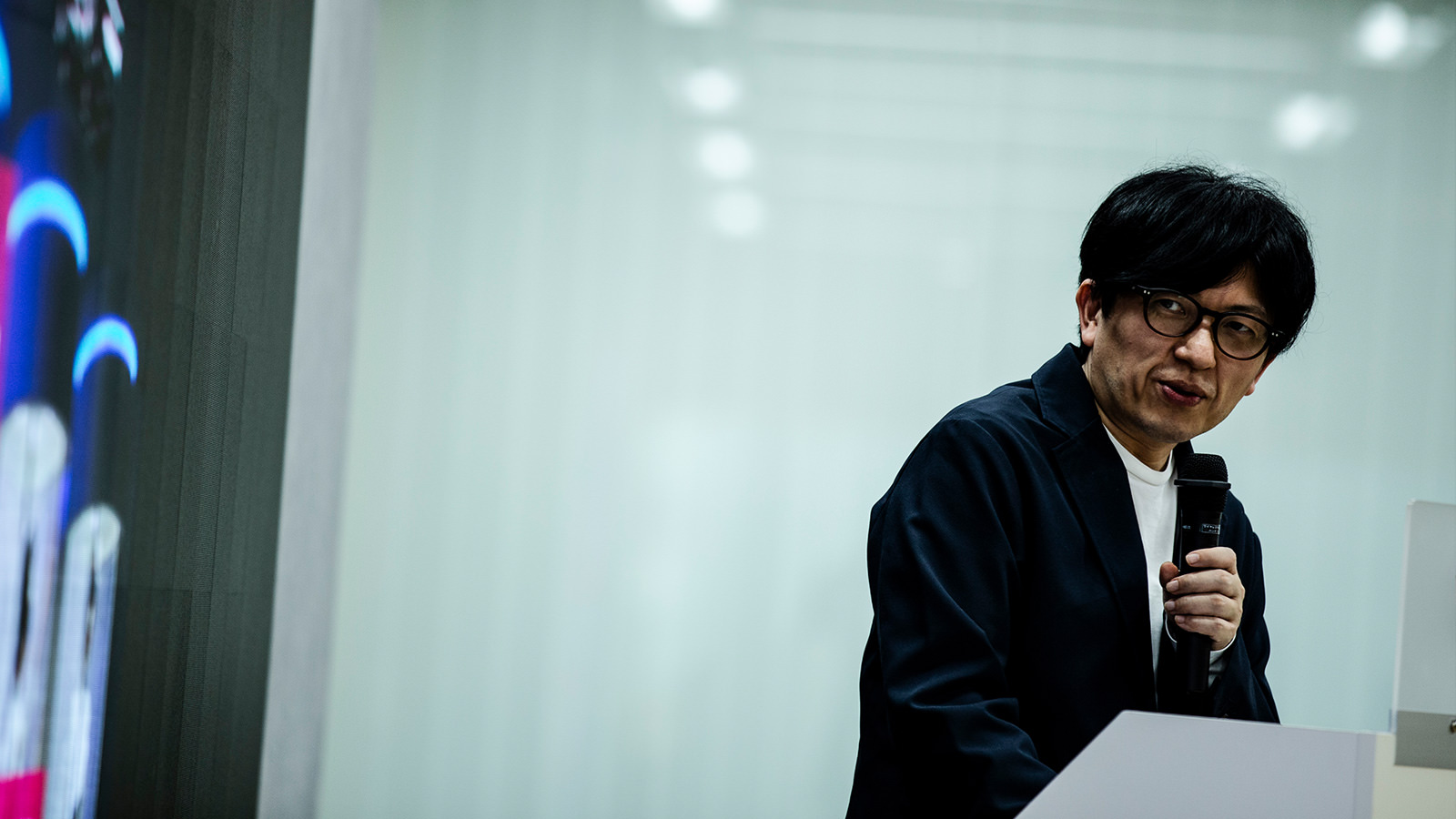
Sugiyama, T.H.
TOKYO NODE Management Office, Mori Building Co.
After working as the general manager of "MORI Building DIGITAL ART MUSEUM: EPSON teamLab Borderless" in 2018, he was in charge of planning "TOKYO NODE", a cultural promotion facility to be opened in 2023. 2025 Osaka-Kansai Expo Signature Pavilion "Inochi no akashi" (The testimony of life) He is also the general planning director of the signature pavilion "Inochi no akashi" at Expo 2025 Osaka-Kansai.


